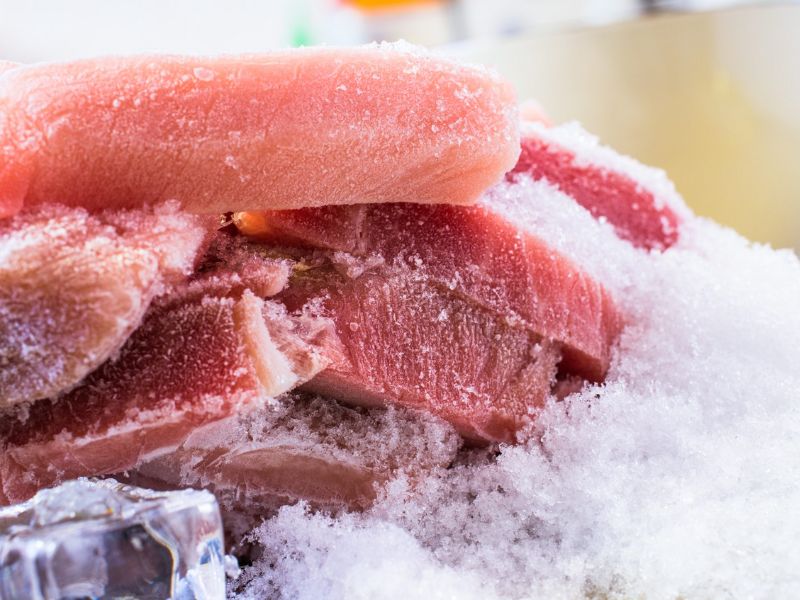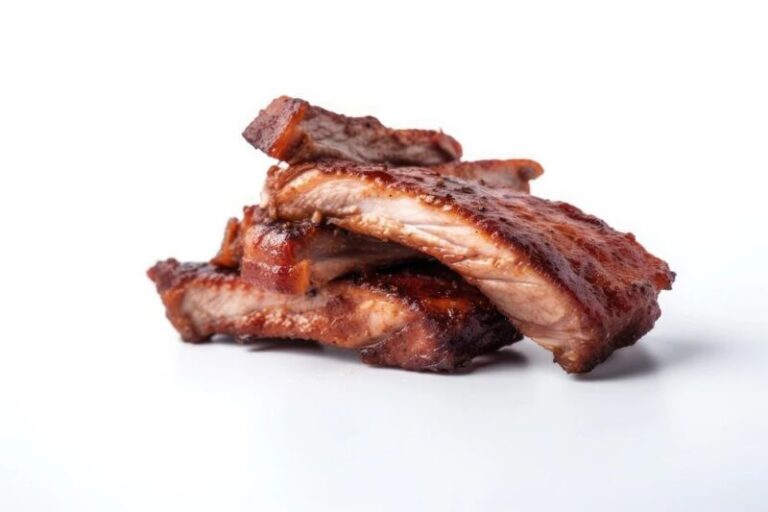How Long Can You Freeze Beef?
Having a firm grasp of safe and efficient food storage techniques is paramount for any cook, regardless of their level of expertise, be it professional or amateur.
When it comes to freezing beef, the question that often arises is: “How long can you freeze beef?” In this comprehensive guide, you will gain valuable insights into freezing beef, including the recommended duration for freezer storage, as well as the most effective methods for cutting and preparing beef prior to freezing.
How long can you freeze beef?
Beef can be stored in the freezer for an extended period without compromising its safety. However, to ensure the best quality, it is recommended to use different cuts of beef within specific timeframes. Steaks, roasts, and chops should be consumed within four to twelve months of freezing, while ground beef is best used within four months. Additionally, cooked beef maintains its optimal quality for two to three months when stored in the freezer.
Freezing beef is an excellent way to preserve its freshness and extend its shelf life. By properly packaging and storing beef in the freezer, you can enjoy its delicious taste and nutritional value even after several months. While beef can technically be stored in the freezer indefinitely without safety concerns, it is advisable to adhere to recommended timeframes for optimal quality.
When it comes to different cuts of beef, steaks, roasts, and chops have a longer freezer life compared to ground beef. These cuts can retain their quality and flavor for up to twelve months in the freezer. It’s worth noting that after the twelve-month mark, while the beef may still be safe to consume, there might be a slight decline in taste and texture.
Ground beef, on the other hand, should ideally be used within four months of freezing. This is because ground beef has a higher surface area exposed to air, which can lead to quicker quality deterioration compared to larger cuts. Consuming ground beef within the recommended timeframe ensures a more enjoyable culinary experience.
If you’ve already cooked beef and want to freeze the leftovers, it is advisable to consume them within two to three months for the best results. While cooked beef can remain safe to eat for a longer duration, freezing it for extended periods may lead to a loss of flavor and texture over time.
Remember to properly package your beef before placing it in the freezer. Using airtight containers or freezer bags helps prevent freezer burn and preserves the beef’s quality. Additionally, labeling the packages with the date of freezing can be helpful for keeping track of their storage time.
How long can you freeze wagyu beef
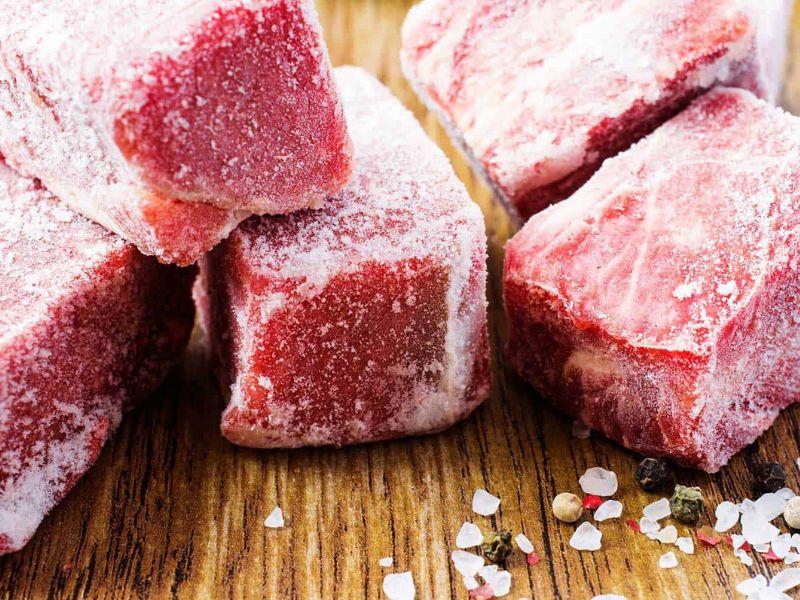
If you have leftover Wagyu beef that you won’t be consuming within a day or two, it is perfectly fine to freeze it for future use. However, it’s important to note that the recommended maximum freezing time for raw meat, including Wagyu beef, is around one month. To ensure that your Wagyu beef maintains its quality during freezing, here are some helpful guidelines:
Verify that the seals on the packaging are airtight. It’s essential to check the integrity of the packaging before freezing. If you have any concerns about the product’s freshness or if there’s a possibility that the packaging has been compromised during transit, it’s advisable to add an extra layer of protection. Consider using a resealable plastic bag or an airtight container to safeguard the beef from potential freezer burn or exposure to air.
When storing the Wagyu beef in the freezer, it’s best to place it on the lowest shelf, preferably far away from the entrance. The lower shelf helps maintain a more consistent temperature, as it is less affected by temperature fluctuations when opening and closing the freezer. Additionally, placing the beef away from the entrance reduces the exposure to warm air that enters the freezer when it’s opened, minimizing the risk of temperature fluctuations and potential loss of quality.
How long can you freeze roast beef
Optimal quality of roast beef is typically achieved when consumed within a period of three to four months after being frozen. While beef that has been frozen can be consumed indefinitely if stored at 0 degrees Fahrenheit (-18 degrees Celsius), the meat’s overall quality may gradually decline due to factors such as freezer burn and changes in taste.
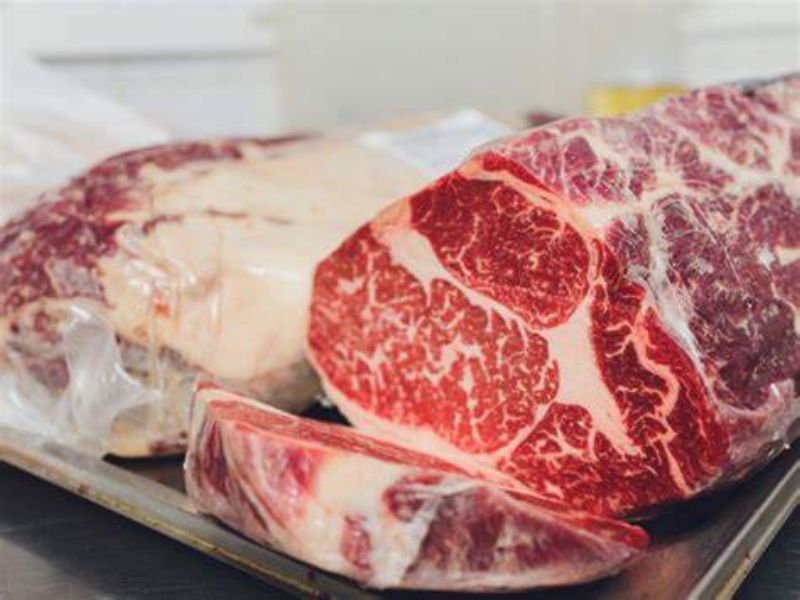
To ensure the freezing process maintains the roast beef’s quality, here is a comprehensive guide:
- Double-layer the roast beef for better preservation. This technique helps prevent the meat from drying out quickly.
- Start by covering the roast beef with either plastic wrap or aluminum foil, ensuring it is fully covered and sealed.
- Store the wrapped roast beef in airtight containers or robust freezer bags. This additional layer of protection helps safeguard the meat from exposure to air and moisture.
- If properly wrapped and stored, roast beef can be kept in the freezer for up to six months. Although it may still be safe to consume beyond this timeframe, it is recommended to consume it within the suggested window to maintain its quality.
How long can you freeze hamburger?
Hamburgers have the ability to be preserved by freezing, allowing them to be stored for an indefinite period of time. However, it’s important to note that their optimal quality and flavor are maintained for a relatively shorter duration, typically around four months. Experts in the field suggest that the ideal period for storing burgers in the freezer falls within the range of four to six months.
While it is generally safe to consume burgers that have been stored in the freezer for over six months, it’s worth considering that their taste and texture may undergo changes as time goes by. To fully enjoy the delectable qualities of your burgers, it is advisable to utilize them within the initial four-month window, ensuring a superior culinary experience.
How long does half a cow last in the freezer?
Proper storage of meat is crucial to ensure its quality and longevity. When it comes to freezing beef, it’s important to note that the meat from a half cow can be preserved for up to a year, provided that it is stored in an airtight container. Without the necessary protection from air, the beef’s shelf life in the freezer will be significantly reduced. To maximize preservation, it is highly recommended to vacuum seal the meat or use other methods that effectively seal out the air.
Before making any beef purchases, it is essential to have a clear understanding of how much beef your household typically consumes. This knowledge helps prevent any unnecessary waste of raw meat. If you anticipate not being able to consume an entire steak or portion of beef on your own, consider sharing it with your loved ones. Sharing a delicious steak meal can be a wonderful way to minimize waste while enjoying quality time with family or friends.
Does frozen meat go bad?
According to the guidelines set by the USDA, frozen meat that is stored at or below 0 degrees Fahrenheit is considered to be consistently safe for consumption from a theoretical standpoint. This is because the extremely low temperature inhibits the growth and survival of bacteria, mold, and other harmful organisms.
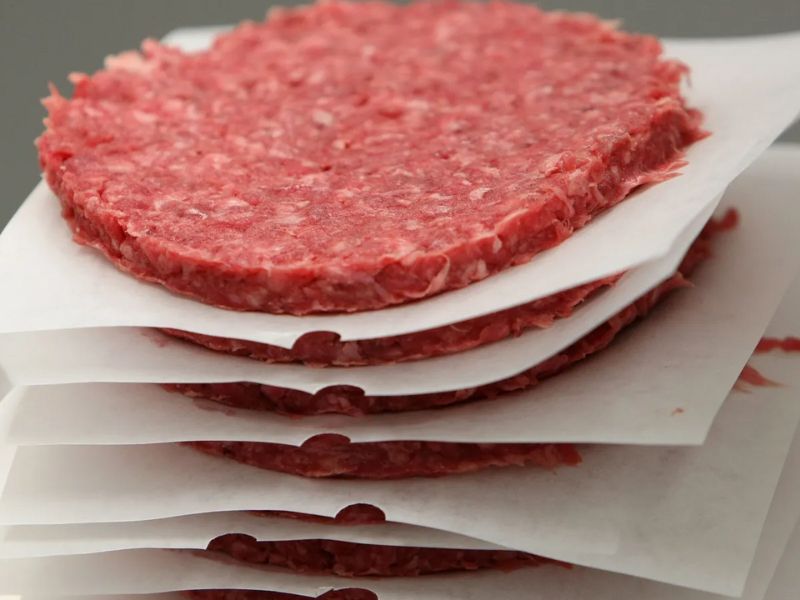
Nevertheless, it is important to note that the safety aspect does not guarantee an optimal taste experience over an indefinite period of time. Freezer burn, a common occurrence in frozen meat, does not pose a health risk, but it can negatively impact the texture and flavor, rendering the meat dry and resembling leather. You can identify freezer burn by the formation of ice crystals on the surface of the meat or by its shriveled and discolored appearance.
Fortunately, there are ways to address freezer burn both before and after cooking the meat. Before cooking, you can trim off the affected areas to minimize the impact of freezer burn on the overall taste and texture. After cooking, any undesirable portions affected by freezer burn can be removed before serving. However, if the meat has undergone severe freezer burn and has become extensively dried out or discolored, it is advisable to discard it for quality reasons.
How to know if frozen beef is bad
Here are some tips to help you determine if your meat in the freezer has spoiled:
Consider the storage duration: Beef can be frozen and kept for a significant period of time without spoiling, but its quality may deteriorate over time. If your beef has been in the freezer for more than six months to a year, it’s wise to be cautious and thoroughly inspect it.
Inspect the packaging: Take a close look at the wrapping for any signs of damage such as rips, holes, or frostbite. Damaged or freezer-burned packaging is an indication that the meat inside may not be fresh.
Color changes: Properly frozen beef should not lose its natural color. Discoloration, especially if it appears dark or gray, could be a symptom of freezer burn or spoilage.
Watch for ice crystals: Check for the presence of ice crystals on the outside of the packaging or inside if it has been frozen. While some ice crystals are normal, excessive amounts or a frosty coating on the meat might suggest that it has been thawed and refrozen, which could impact the flavor.
Test the consistency: Thaw a small amount of beef in the refrigerator or using a safe method for food storage and preparation. Once thawed, examine the texture of the beef. If it feels unusually soft, mushy, or slimy, it has likely gone bad and should be discarded.
Smell for any signs of spoilage: Rotten or unpleasant odors are strong indicators that the beef has spoiled. Freshly frozen beef should not have a pungent smell.
Prioritize food safety: It is crucial to prioritize food safety. If you have any concerns about the freshness or cleanliness of a package of frozen beef, it’s better to err on the side of caution and dispose of it.
How to thaw frozen beef
There are several methods available for cooking frozen beef, each offering its own advantages and considerations.
One option is to thaw the frozen meat in the refrigerator, which ensures a gradual and even thawing process while maintaining the meat at a safe temperature below 40 degrees Fahrenheit. To accomplish this, simply place the frozen beef in the refrigerator the night before you plan to cook it. For example, a standard 3-pound roast would typically require approximately 16 hours to thaw thoroughly. Once the beef is thawed, it can be safely stored in the refrigerator for an additional three to five days. Remember to defrost the meat on a plate or tray to catch any juices that may escape.
In situations where advanced planning is not possible, you can use your sink to expedite the thawing process. Fill the sink with enough water to completely submerge the packaged beef. Leave the beef in its plastic packaging and immerse it in the water, ensuring to change the water every 30 minutes. Thawing occurs at a rate of approximately 30 minutes per pound of beef. It is crucial to keep the beef below 40 degrees Fahrenheit during this process to prevent bacterial growth. Therefore, frequent water changes with cold water are necessary to maintain a safe temperature.
Once the beef has been thawed in water, it is essential to cook it promptly to ensure food safety. While it can be briefly stored in the refrigerator after thawing, it is best to cook the beef as quickly as possible to minimize the risk of bacterial growth.
Overall, whether you choose to thaw your frozen beef in the refrigerator or by using the sink method, it is important to prioritize food safety by ensuring proper temperature control and cooking the beef promptly after thawing.
Tips for cooking frozen ground beef
When it comes to cooking ground beef straight from the freezer, there are a few important considerations to keep in mind. Firstly, it’s essential to allocate some extra time for cooking. Typically, frozen food requires around a 50 percent increase in cooking time compared to fresh or defrosted ingredients. This rule of thumb gives you an idea of what to expect.
Despite being frozen, ground beef can still be cooked relatively quickly if you follow our recommended steps. With the right approach, you can have dinner on the table in about 30 minutes, which is quite impressive for a block of beef straight from the freezer.
Once you’ve cooked the frozen ground beef, it’s time to season it. However, it’s important to note that frozen ground beef tends to make it harder for spices and sauces to stick. Therefore, it’s best to wait until the ground beef is fully cooked before adding any seasonings or sauces. By doing so, you can ensure that the flavors are well-distributed and the end result will be equally delicious.
One common issue when cooking frozen ground beef is its texture. We understand that it may not appear as appetizing as raw ground beef while being cooked. However, the good news is that frozen ground beef is surprisingly flexible in terms of texture. Whether you cook it on the stovetop or in an Instant Pot, it comes out juicy, supple, and soft. This makes it easy to incorporate into any recipe without compromising on taste or quality.
When cooking ground beef from the freezer, it’s crucial to follow the “160-degree rule.” This means using a food thermometer to ensure that the ground beef reaches an internal temperature of 160 degrees Fahrenheit. This ensures that it is fully cooked all the way through and uniformly browned, without any pink areas. By adhering to this rule, you can eliminate any concerns about overcooking the ground beef and enjoy it safely and deliciously.
